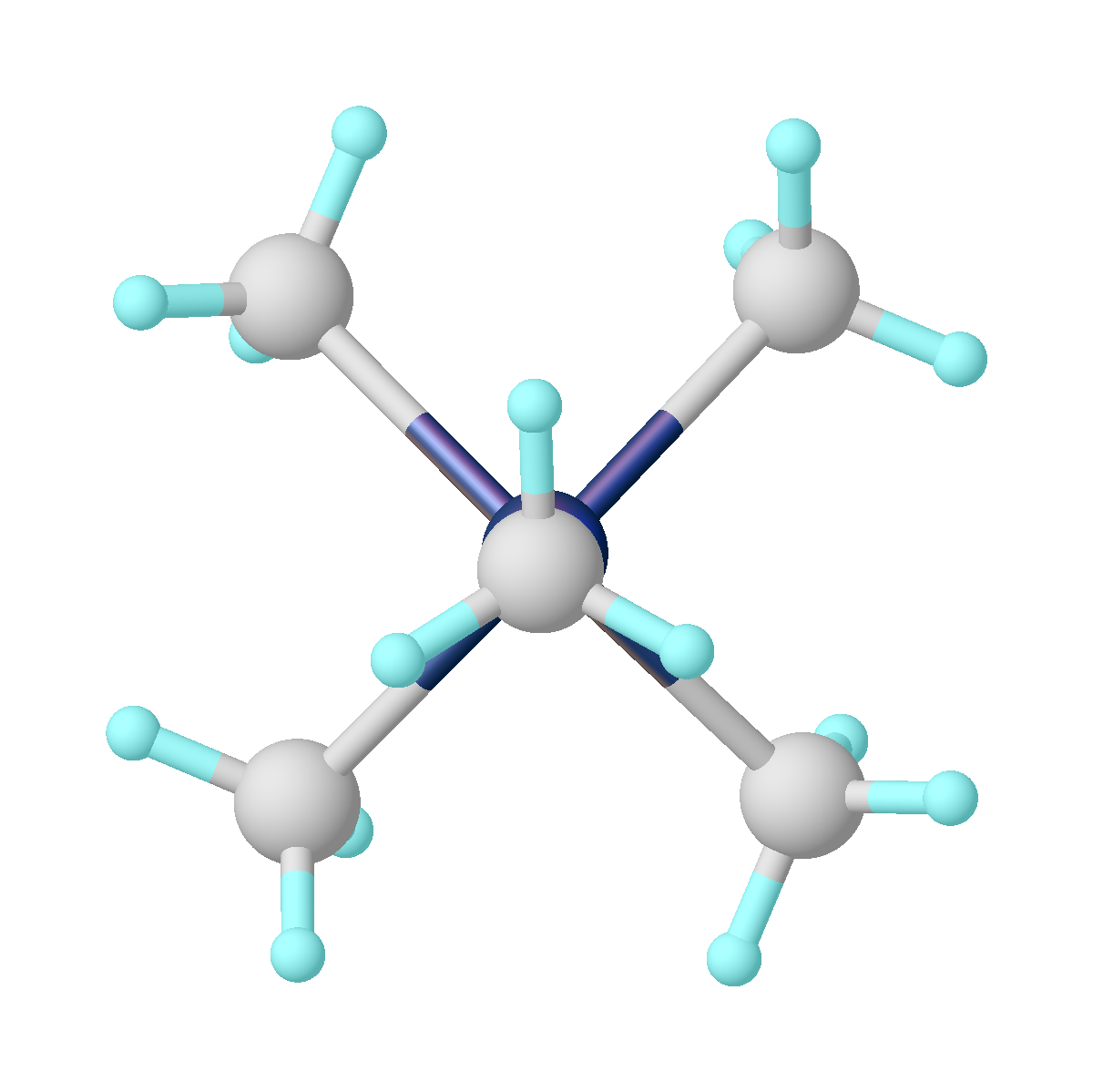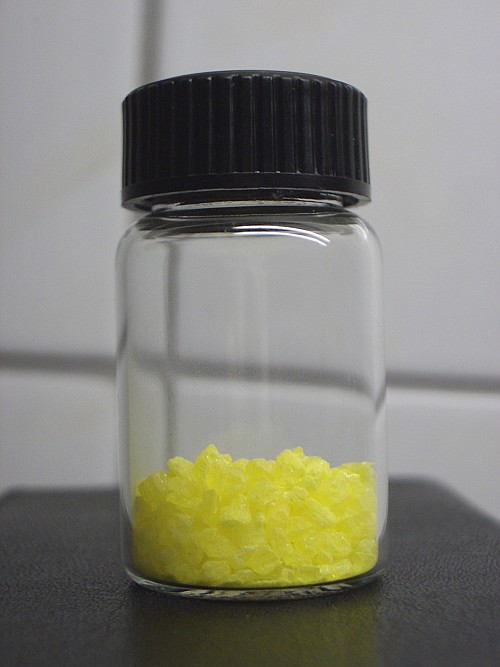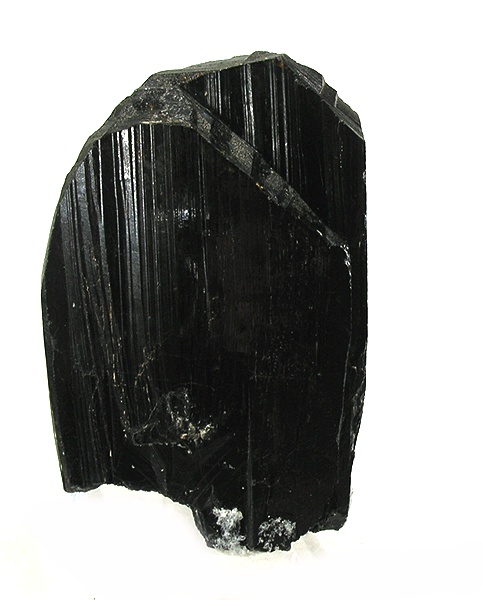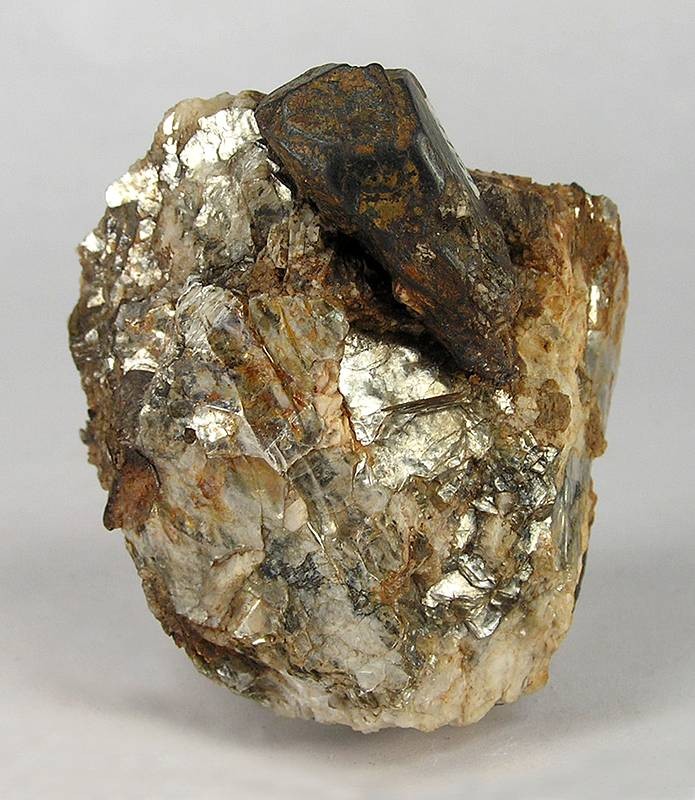|
Tantalum
Tantalum is a chemical element; it has Symbol (chemistry), symbol Ta and atomic number 73. It is named after Tantalus, a figure in Greek mythology. Tantalum is a very hard, ductility, ductile, lustre (mineralogy), lustrous, blue-gray transition metal that is highly corrosion-resistant. It is part of the refractory metals group, which are widely used as components of strong superalloy, high-melting-point alloys. It is a group 5 element, along with vanadium and niobium, and it always occurs in geologic sources together with the chemically similar niobium, mainly in the mineral groups tantalite, columbite, and coltan. The chemical inertness and very high melting point of tantalum make it valuable for laboratory and industrial equipment such as Chemical reactor, reaction vessels and vacuum furnaces. It is used in tantalum capacitors for electronic equipment such as computers. It is being investigated for use as a material for high-quality superconducting resonators in quantum proces ... [...More Info...] [...Related Items...] OR: [Wikipedia] [Google] [Baidu] |
Tantalum Capacitor
A tantalum electrolytic capacitor is an electrolytic capacitor, a passive component of electronic circuits. It consists of a pellet of porous tantalum metal as an anode, covered by an insulating oxide layer that forms the dielectric, surrounded by liquid or solid electrolyte as a cathode. The tantalum capacitor, because of its very thin and relatively high permittivity dielectric layer, distinguishes itself from other conventional and electrolytic capacitors in having high capacitance per volume (high volumetric efficiency) and lower weight. Tantalum is a conflict resource. Tantalum electrolytic capacitors are considerably more expensive than comparable aluminum electrolytic capacitors. Tantalum capacitors are inherently polarized components. Reverse voltage can destroy the capacitor. Non-polar or bipolar tantalum capacitors are made by effectively connecting two polarized capacitors in series, with the anodes oriented in opposite directions. Tantalum electrolytic capacitors a ... [...More Info...] [...Related Items...] OR: [Wikipedia] [Google] [Baidu] |
Group 5 Element
Group 5 is a group of elements in the periodic table. Group 5 contains vanadium (V), niobium (Nb), tantalum (Ta) and dubnium (Db). This group lies in the d-block of the periodic table. This group is sometimes called the vanadium group or vanadium family after its lightest member; however, the group itself has not acquired a trivial name because it belongs to the broader grouping of the transition metals. As is typical for early transition metals, niobium and tantalum have only the group oxidation state of +5 as a major one, and are quite electropositive (it is easy to donate electrons) and have a less rich coordination chemistry (the chemistry of metallic ions bound with molecules). Due to the effects of the lanthanide contraction, the decrease in ionic radii in the lanthanides, they are very similar in properties. Vanadium is somewhat distinct due to its smaller size: it has well-defined +2, +3 and +4 states as well (although +5 is more stable). The lighter three Group 5 el ... [...More Info...] [...Related Items...] OR: [Wikipedia] [Google] [Baidu] |
Coltan
Coltan (short for columbite–tantalites and known industrially as tantalite) is a dull black metallic ore from which the elements niobium and tantalum are extracted. The niobium-dominant mineral in coltan is columbite (after niobium's original American name ''columbium''), and the tantalum-dominant mineral is tantalite. Tantalum from coltan is used to manufacture tantalum capacitors which are used for mobile phones, personal computers, automotive electronics, and cameras. Mining in the Democratic Republic of the Congo#Mining resumes (2001–present), Coltan mining is widespread in the Democratic Republic of the Congo. Production and supply Approximately 71% of the global tantalum supply in 2008 was newly mined, 20% was from recycling, and the remainder was from tin slag and inventory. Tantalum minerals are mined in the Democratic Republic of the Congo, Colombia, Rwanda, Australia, Brazil, China, Ethiopia, Mozambique and Kenya. Tantalum is also produced in Thailand and Malaysi ... [...More Info...] [...Related Items...] OR: [Wikipedia] [Google] [Baidu] |
Columbium
Niobium is a chemical element; it has symbol Nb (formerly columbium, Cb) and atomic number 41. It is a light grey, crystalline, and ductile transition metal. Pure niobium has a Mohs hardness rating similar to pure titanium, and it has similar ductility to iron. Niobium oxidizes in Earth's atmosphere very slowly, hence its application in jewelry as a hypoallergenic alternative to nickel. Niobium is often found in the minerals pyrochlore and columbite. Its name comes from Greek mythology: Niobe, daughter of Tantalus, the namesake of tantalum. The name reflects the great similarity between the two elements in their physical and chemical properties, which makes them difficult to distinguish. English chemist Charles Hatchett reported a new element similar to tantalum in 1801 and named it columbium. In 1809, English chemist William Hyde Wollaston wrongly concluded that tantalum and columbium were identical. German chemist Heinrich Rose determined in 1846 that tantalum ores con ... [...More Info...] [...Related Items...] OR: [Wikipedia] [Google] [Baidu] |
Niobium
Niobium is a chemical element; it has chemical symbol, symbol Nb (formerly columbium, Cb) and atomic number 41. It is a light grey, crystalline, and Ductility, ductile transition metal. Pure niobium has a Mohs scale of mineral hardness, Mohs hardness rating similar to pure titanium, and it has similar ductility to iron. Niobium oxidizes in Earth's atmosphere very slowly, hence its application in jewelry as a hypoallergenic alternative to nickel. Niobium is often found in the minerals pyrochlore and columbite. Its name comes from Greek mythology: Niobe, daughter of Tantalus, the namesake of tantalum. The name reflects the great similarity between the two elements in their physical and chemical properties, which makes them difficult to distinguish. English chemist Charles Hatchett reported a new element similar to tantalum in 1801 and named it columbium. In 1809, English chemist William Hyde Wollaston wrongly concluded that tantalum and columbium were identical. German chemist He ... [...More Info...] [...Related Items...] OR: [Wikipedia] [Google] [Baidu] |
Columbite
Columbite, also called niobite, niobite-tantalite and columbate, with a general chemical formula of , is a black mineral group that is an ore of niobium. It has a submetallic luster, a high density, and is a niobate of iron and manganese. Niobite has many applications in aerospace, construction and the medical industry. Dating columbite minerals is primarily completed by uranium lead (U-Pb) dating, a slow process. Columbite has the same composition and crystal symmetry (orthorhombic) as tantalite. In fact, the two are often grouped together as a semi-singular mineral series called columbite-tantalite or coltan in many mineral guides. However, tantalite has a much greater specific gravity than columbite, more than 8.0 compared to columbite's 5.2. The formation of columbite depends on the concentrations of metals present that affect the crystalline structure of the mineral and the environmental impact. Columbite is a polymorph of tapiolite; they have the same chemical composit ... [...More Info...] [...Related Items...] OR: [Wikipedia] [Google] [Baidu] |
Anders Ekeberg
Anders Gustaf Ekeberg (16 January 1767 in Stockholm, Sweden – 11 February 1813 in Uppsala, Sweden) was a Swedish analytical chemist who discovered tantalum in 1802. - subscription required He was notably deaf. Education Anders Gustav Ekeberg was a Swedish scientist, mathematician and expert in Greek literature. His father, Joseph Erik Ekeberg, was a shipbuilder. His uncle was Carl Gustaf Ekeberg. Anders Gustav Ekeberg attended school at Kalmar, Söderåkra, Vestervik, and Karlskrona. He was a gifted student and enrolled at Uppsala University in 1784, graduating in 1788. His thesis addressed the extraction of oils from seeds. In 1789 and 1790, he traveled and studied in Germany, hearing Martin Heinrich Klaproth lecture in Berlin as well as Christian Ehrenfried Weigel in Greifswald. Career In 1794, Anders Gustav Ekeberg began teaching at Uppsala. He was a supporter of Antoine Lavoisier's proposals for systematizing chemical nomenclature. In 1795 he and Pehr von Afzelius ... [...More Info...] [...Related Items...] OR: [Wikipedia] [Google] [Baidu] |
Refractory Metals
Refractory metals are a class of metals that are extraordinarily resistant to heat and wear. The expression is mostly used in the context of materials science, metallurgy and engineering. The definitions of which elements belong to this group differ. The most common definition includes five elements: two of the fifth period (niobium and molybdenum) and three of the sixth period (tantalum, tungsten, and rhenium). They all share some properties, including a melting point above 2000 °C and high hardness at room temperature. They are chemically inert and have a relatively high density. Their high melting points make powder metallurgy the method of choice for fabricating components from these metals. Some of their applications include tools to work metals at high temperatures, wire filaments, casting molds, and chemical reaction vessels in corrosive environments. Partly due to their high melting points, refractory metals are stable against creep deformation to very high tem ... [...More Info...] [...Related Items...] OR: [Wikipedia] [Google] [Baidu] |
Heinrich Rose
Heinrich Rose (6 August 1795 – 27 January 1864) was a German mineralogist and analytical chemist. He was the brother of the mineralogist Gustav Rose and a son of Valentin Rose. Rose's early works on phosphorescence were noted in the Quarterly Journal of Science in 1821, and on the strength of these works, he was elected privatdozent at the University of Berlin from 1822, then Professor from 1832. In 1846, Rose rediscovered the chemical element niobium, proving conclusively that it was different from tantalum. This confirmed that Charles Hatchett had discovered niobium in 1801 in columbite ore. Hatchett had named the new element "columbium", from the ore in which niobium and tantalum coexist. The element was eventually assigned the name niobium by the IUPAC in 1950 after Niobe, the daughter of Tantalus in Greek mythology. In 1845, Rose published the discovery of a new element pelopium, which he had found in the mineral tantalite. After subsequent research, pelopium was iden ... [...More Info...] [...Related Items...] OR: [Wikipedia] [Google] [Baidu] |
Charles Hatchett
Charles Hatchett Fellow of the Royal Society, FRS FRSE (2 January 1765 – 10 March 1847) was an English mineralogist and analytical chemist who discovered the element niobium, for which he proposed the name "columbium". Hatchett was elected a Fellow of the Linnaean Society in 1795, and of the Royal Society in 1797. Hatchett was elected to the The Club (dining club), Literary Club in London in 1809 and became its treasurer in 1829. Life Charles Hatchett was born in Long Acre, London to John Hatchett (1729–1806), and Elizabeth Hatchett. John Hatchett was "(one of) the coachbuilders of London of the greatest celebrity". He later became a magistrate in Hammersmith. Charles Hatchett attended a private school, Fountayne's, in Marylebone Park, and was a self-taught mineralogist and analytical chemist. On 24 March 1786, Charles Hatchett married Elizabeth Martha Collick (1756–1837) at St Martin-in-the-Fields. Their children included: #John Charles Hatchett (bapt 27 January 1788 St ... [...More Info...] [...Related Items...] OR: [Wikipedia] [Google] [Baidu] |
William Hyde Wollaston
William Hyde Wollaston (; 6 August 1766 – 22 December 1828) was an English chemist and physicist who is famous for discovering the chemical elements palladium and rhodium. He also developed a way to process platinum ore into malleable ingots,Melvyn C. UsselmanWilliam Hyde WollastonEncyclopædia Britannica, retrieved 31 March 2013 patented the camera lucida, and made contributions in electricity and spectroscopy. Life He was born in East Dereham in Norfolk, the son of the Francis Wollaston (1737–1815), a noted amateur astronomer, and his wife Althea Hyde. He was one of 17 children, but the family was financially well-off and he enjoyed an intellectually stimulating environment. He was educated privately (and remotely) at Charterhouse School from 1774 to 1778 then studied Sciences at Gonville and Caius College, Cambridge. In 1793 he obtained his doctorate (MD) in medicine from Cambridge University, and was a Fellow of his college from 1787 to 1828. He worked as a ph ... [...More Info...] [...Related Items...] OR: [Wikipedia] [Google] [Baidu] |
Superalloy
A superalloy, or high-performance alloy, is an alloy with the ability to operate at a high fraction of its melting point. Key characteristics of a superalloy include mechanical strength, thermal creep deformation resistance, surface stability, and corrosion and oxidation resistance. The crystal structure is typically face-centered cubic (FCC) austenitic. Examples of such alloys are Hastelloy, Inconel, Waspaloy, Rene alloys, Incoloy, MP98T, TMS alloys, and CMSX single crystal alloys. Superalloy development relies on chemical and process innovations. Superalloys develop high temperature strength through solid solution strengthening and precipitation strengthening from secondary phase precipitates such as gamma prime and carbides. Oxidation or corrosion resistance is provided by elements such as aluminium and chromium. Superalloys are often cast as a single crystal in order to eliminate grain boundaries, trading in strength at low temperatures for increased resistance to th ... [...More Info...] [...Related Items...] OR: [Wikipedia] [Google] [Baidu] |








